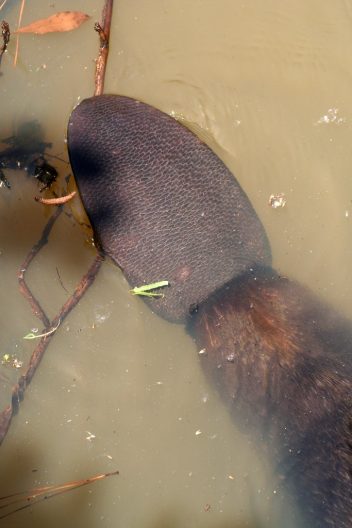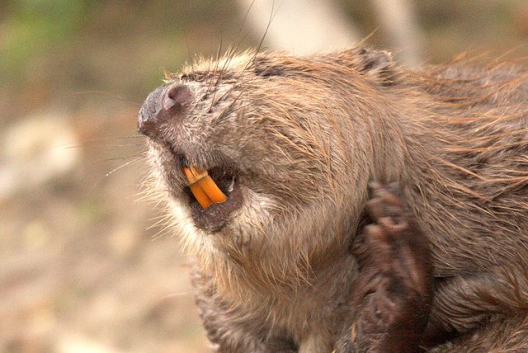Leave it to beavers: How a controversial rodent aids in salmon restoration and recovery
Anyone who lives in the Pacific Northwest for a period of time is bound to eventually become acquainted with beavers or see signs of their presence. These cute, fuzzy semi-aquatic rodents are abundant in Seattle and have called this area home since long before humans arrived. Now, beavers are making their homes alongside humans, but these neighbors do not come without controversy. They sometimes gnaw down valuable trees, intensify agricultural flooding, cause property damage, or can jam culverts with logs. On top of that, beavers have been blamed for the decline in salmon populations in our region. However, anecdotal evidence and new research tell us nothing could be further from the truth. In fact, beavers might be an unsuspecting ally in salmon recovery efforts, support the overall health of the ecosystem, and can be used as a tool to combat climate change.
When I first moved to Washington, it wasn’t long before I started seeing news articles about salmon recovery and restoration pop up everywhere, and almost all my classes at the School of Marine and Environmental Affairs (SMEA) have connected back to salmon in some way or another. In learning about salmon, it became evident to me how interconnected our ecosystems are with the people and animals who live in them; there are webs of connections and interactions well beyond what we currently know. When thinking about conserving salmon, it is also important to understand the interactions between salmon, their habitat, and other species that live there because the conservation efforts of one species might have a direct impact on another. Many people familiar with salmon in the Pacific Northwest understand their connection to the local critically endangered population of Southern Resident orcas, a sub-species of orcas that feed on salmon rather than marine mammals. However, it’s the lesser-known, and much more controversial animal that is linked with salmon and salmon recovery, the beaver, that also deserves to be in the spotlight.
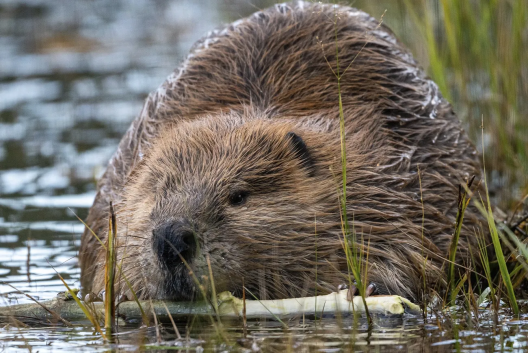
Beavers (Castor canadensis) are North America’s largest rodents. They were once the most widely distributed mammal in North America, but the arrival of European settlers and the fur trade nearly decimated their populations in the 1800s. Despite this, beavers have made a remarkable comeback and can be found in most of their historical habitat today. Beavers live in aquatic habitats throughout North America, with a few exceptions. These semi-aquatic animals are easily identifiable by their paddle-like tails and large, tree-chewing front incisor teeth. Beavers are known for their ability to shape riparian ecosystems and change the way rivers function by building dams, falling trees, and otherwise altering the landscape for their own benefit, much like humans do. Their complex relationship with the land means that entire watersheds can be transformed in the presence, or absence, of beavers. This immense impact on the land and other animals makes beavers both ecosystem engineers and keystone species.
“Their complex relationship with the land means that entire watersheds can be transformed in the presence, or absence, of beavers.”
- Beavers can be identified by their paddle-like tail and large, orange front incisor teeth. Photos courtesy of Tony Alter and Sylvain Haye, shared under a creative commons license
Beavers can have numerous benefits to watersheds and the species that live there, especially salmon. Over millennia, beavers and salmon have co-evolved, creating a relationship between the two species that generate several benefits for salmon recovery. Contrary to what some biologists used to believe, beaver dams do not impede the passage of most fish. In fact, salmon and other native fish that have co-evolved with beavers have no problem traversing streams and rivers packed with natural dams, and the benefits of the dams to the fish far outweigh any possible barriers. The dam’s natural porosity makes them semi-permeable, and it’s easy for the salmon to go around, through, or over them. Even human-made beaver dam mimics, or beaver dam analogs (BDAs), have been developed by conservationists as a method of fish and watershed recovery. In one stream in Oregon, more than 120 BDAs increased beaver activity in the area eightfold, and juvenile steelhead trout survival spiked by more than 50%. Another study found that the absence of beavers and beaver ponds in the Stillaguamish watershed caused the biggest decline in salmon fry habitat since the 1800s.
Beaver dams allow for the passage of fish while also creating deep, cold ponds, the ideal nursery habitat for juvenile salmon. Without the beavers and their dams, many streams have eroded and cut deep channels into the landscape, cutting off streams and tributaries from the rest of the floodplain and making the areas more susceptible to seasonal flooding and drought, while also disconnecting salmon from the rest of their habitat. In floods, salmon fry are washed away and, in droughts, the fish cannot travel as far upriver and the water becomes too warm. In the presence of beaver dams, the flow of the river is slowed and water has the time to seep into the ground, restoring groundwater and effectively cooling it in the process. Behind the dams, these cold deep ponds are often rich with salmon fry that need those environments to survive and grow. Juvenile salmon become vulnerable at temperatures higher than 68 degrees Fahrenheit, a threshold that is often breached in streams due to climate change. With beaver dams cooling the water, their ponds are a natural refuge for these cold-water fish.
Woody debris produced by beavers when they gnaw on and use branches also provides complex edge habitat that shades the water and improves the overall habitat of the river by cooling it and providing habitat for numerous insect species, which are prime food sources for juvenile salmon. This woody debris can also protect salmon from predators, increasing their chances of surviving as they traverse the watershed. Because of how essential beavers are for salmon habitat, protecting beavers can have a trickle-down effect on protecting salmon.
“Because of how essential beavers are for salmon habitat, protecting beavers can have a trickle-down effect on protecting salmon.”
Salmon are not the only wildlife that benefits from the presence of beavers. Moose, mink, muskrats, waterfowl, amphibians, and insects all benefit from the cold ponds and slow-moving water created by beavers. Riparian zones are biodiversity hotspots, and beavers facilitate their development and expansion, therefore increasing the biodiversity and abundance in the area.
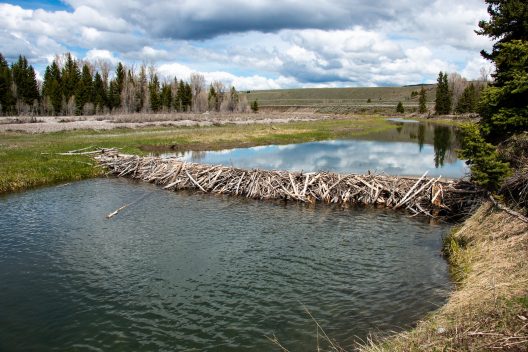
Not only are beavers good for salmon conservation, but they also provide several other ecosystem services, such as combatting climate change. In his book Eager: The Surprising, Secret Life of Beavers and Why They Matter, Ben Goldfarb writes:
“Beavers, the animal that doubles as an ecosystem, are ecological and hydrological Swiss Army knives, capable, in the right circumstances, of tackling just about any landscape-scale problem you might confront. Trying to mitigate floods or improve water quality? There’s a beaver for that. Hoping to capture more water for agriculture in the face of climate change? Add a beaver. Concerned about sedimentation, salmon populations, wildfire? Take two families of beavers and check back in a year.”
Many of the impacts of climate change are alleviated in the presence of beavers. Because beaver dams slow stream water down, they also help hold water in the system longer, which fights against drought and helps recharge groundwater aquifers. Adjacent landscapes are also more protected from flash floods, as marshes and networks of channels created by beavers act as a buffer against flooding. Additionally, beaver dams filter the water, improving water quality and helping prevent silt and pollution from spreading through a watershed. Finally, beaver dams and the sediments that build up behind them help sequester carbon, which reduces the impacts of greenhouse gas emissions and associated global warming.
Despite all their benefits to the ecosystem and salmon, the heavy impact of beavers on the landscape and their voracious appetite means they frequently run headlong into conflicts with humans, particularly local landowners. Beavers can damage valuable trees on farms and agricultural lands, such as fruit trees and alfalfa. Additionally, beaver dams can cause floods on agricultural lands or can impound tide gates and culverts that work to control water flow and provide fish passage. In this instance, beavers may actually further impede salmon recovery. It’s no wonder so many people consider them to be a nuisance.
This fall, I heard a firsthand account of this tension on Whidbey Island near the Maxwelton Watershed. As part of an SMEA 550 class, we ventured to Whidbey to learn about salmon conservation and tide gates. One of the farmers I spoke with mentioned that the beavers were a major issue on his land and that he sees them as large pests that need to be controlled and, in some cases, killed.
Nuisance or not, it was humans that first altered the homes of these beavers. The animals are just doing what comes naturally, playing an important role in salmon recovery, water conservation, and stream restoration in the process. Fortunately, there are many ways we can coexist with our hard-working furry neighbors. Farmers can protect their trees and crops by fencing them off or by painting the trunks of trees with latex paint and sand to deter beavers from gnawing on them. Additionally, fencing can be installed near culverts and tide gates to prevent beavers from clogging them, reducing the need to use destructive dynamite to remove the dams—a method that landowners in the Maxwelton Watershed had to use this year. The Methow Beaver Project in Washington also suggests installing flow devices that can be used to control flooding on agricultural land that occurs as a result of beaver dams. Finally, a last resort method may be to relocate beavers that are causing harm to landowners. The Tulalip Tribe in Washington are leaders in these relocation efforts, strategically moving beavers away from humans to areas where they might have the most benefit to salmon. Luckily, we can learn to live with beavers in a way that supports the health of local watersheds, salmon, and beavers.
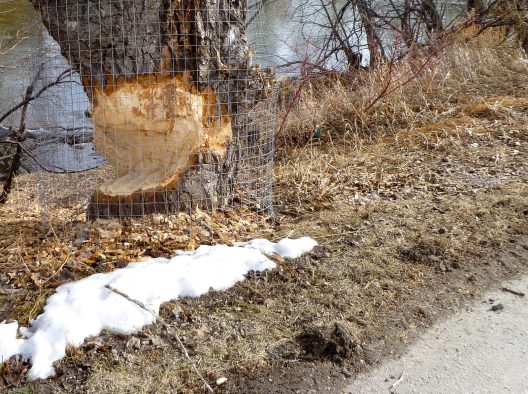
The next time you hear an organism called a nuisance or a “pest,” consider its role in the ecosystem and how other organisms might have co-evolved with it, such as the beaver and salmon. You might find that these species interactions are critical, and perhaps it’s humans that are “pests” to the beavers. Though we humans like to play “nature’s engineers,” nature, and especially the beaver, often has its own ideas. In cases like these, we must learn to coexist with these organisms that produce valuable habitats and services for humans and other animals.
If you’re lucky, you might just see these animals hard at work in watersheds near you. In Seattle, beavers, and signs of beavers such as dams, dens, burrows, lodges, and gnawed willows or alder, have been spotted near the University of Washington campus at Union Bay Natural Area. Other spots you might see beavers include Madison Park, Meadowbrook Pond, Golden Gardens, Magnuson Park, Carkeek Park, and several other places in the Seattle area. Elusive during the day, the best time to search for beavers is during dawn and dusk. Get outside to explore with some binoculars and patience and you may get lucky and see one of the salmon’s natural allies bobbing in the water or feasting on willows.
